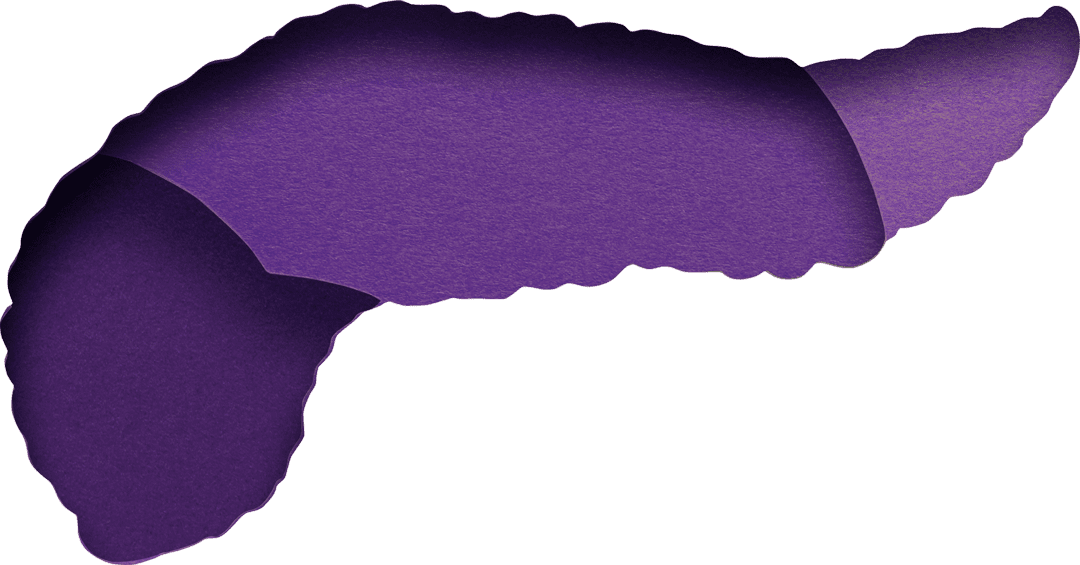Symptoms
Learn about the symptoms of pancreatic cancer. The symptoms of pancreatic cancer are similar to the symptoms for many other illnesses. This makes it hard to recognize and diagnose the disease at earlier, more treatable stages.
What are the symptoms of pancreatic cancer?
Main Symptoms of Adenocarcinoma (or Exocrine)

The tumor presses on the stomach and small intestine. If the tumor is toward the middle of the pancreas it can be near the celiac nerve.
Tumors in the tail can cause:
- Lower Abdomen Pain
- Back Pain
- Nausea
- Loss of Appetite
- Unintended Weight Loss
- Pain After Eating
- Indigestion
A tumor in this location is also more likely to be near the celiac nerve.
Tumors in this location can cause:
- Upper Abdomen Pain
- Back Pain
The tumor is more likely to be near the bile duct.
Tumors in the head can cause:
- Unintended Weight Loss
- Nausea
- Jaundice
- Dark urine and light stool
Neuroendocrine tumor symptoms
This rare form of pancreatic cancer can cause some of the same symptoms as adenocarcinoma, including abdominal pain, weight loss, nausea, and vomiting. However, this cancer affects the islet cells, which make hormones. There are also some symptoms that mostly only occur with this form of pancreatic cancer, depending on the type of tumor.
Insulinomas make excess insulin and can cause low blood sugar, with symptoms including sweating, anxiety, lightheadedness, and fainting.
Gastrinomas make excess gastrin, leading to more stomach acid, causing abdominal pain, nonhealing stomach ulcers, reflux, weight loss.
VIPomas make excess vasoactive intestinal peptide, causing abdominal cramping, watery diarrhea, facial flushing.
Glucagonomas make excess glucagon, raising blood sugar levels, and can cause diarrhea, excessive thirst or urination, weight loss.
Somatostatinomas make excess somatostatin which regulates other hormones, and result in diarrhea, weight loss, abdominal pain, foul-smelling fatty stools.
PPomas make pancreatic polypeptide, which regulates endocrine and exocrine cells in the pancreas, and causes belly pain and an enlarged liver.
Pancreatic cancer has few early warning signs. The pancreas is located deep in the abdomen, so a tumor in its early stages cannot be felt on physical examination by a doctor. If early symptoms occur, they are very general and vague and can be caused by many conditions other than pancreatic cancer.
As the cancer spreads beyond the pancreas it can cause symptoms related to its location. The symptoms depend on the part of the body the cancer is in.
There are two main types of pancreatic cancer:
- exocrine (adenocarcinoma), which is the most common by far;
- and pancreatic neuroendocrine tumors, which are rare.
General symptoms
These symptoms may occur before any of the more common symptoms and MAY indicate the presence of pancreatic cancer.
- New-onset diabetes
- Fatigue
- Loss of appetite
- Acute pancreatitis attacks
- Depression
Unusual symptoms
These symptoms occur rarely but have been known to indicate the presence of a tumor in the pancreas.
- Taste aversions—sudden dislike of tastes that used to be favored. Examples include coffee, smoking, wine
- Early fullness when eating
- Notable weakness when eating
- Blood clots
- Odd fatty deposits under the skin



